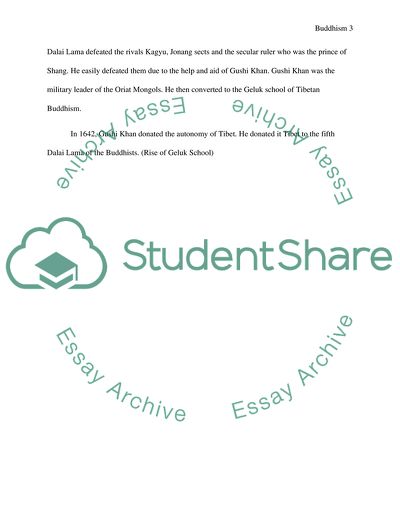Buddhism in 1500-1700 AD Essay Example | Topics and Well Written Essays - 500 words. Retrieved from https://studentshare.org/anthropology/1581694-buddhism-in-1500-1700-ad
Buddhism in 1500-1700 AD Essay Example | Topics and Well Written Essays - 500 Words. https://studentshare.org/anthropology/1581694-buddhism-in-1500-1700-ad.


